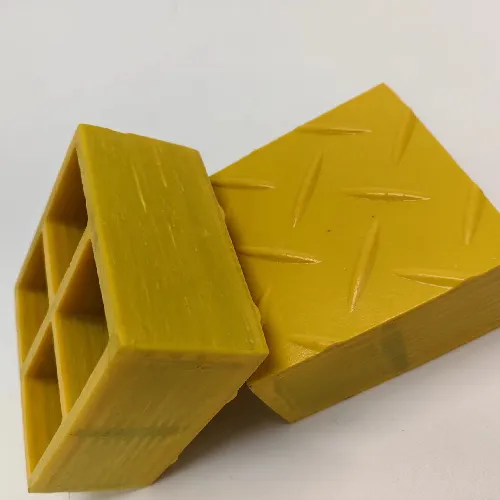loading...
- No. 9, Xingyuan South Street, Dongwaihuan Road, Zaoqiang County, Hengshui, Hebei, China
- admin@zjcomposites.com
- +86 15097380338
- Welcome to visit our website!
frp channel
Understanding FRP Channels A Comprehensive Overview
In the realm of engineering and construction, choosing the right materials plays a crucial role in ensuring the longevity and efficiency of structures. One such material gaining popularity is Fiber Reinforced Polymer (FRP), particularly in the formation of channels used for various applications. This article aims to explore the significance, benefits, and applications of FRP channels, shedding light on their transformative impact in today's industry.
What are FRP Channels?
FRP channels are structural materials made from a polymer matrix reinforced with fibers, typically glass, carbon, or aramid. These materials are designed in channel shapes, providing versatility in various construction and engineering projects. The unique properties of FRP allow it to combine strength with a lightweight structure, making it an appealing alternative to traditional materials such as steel and concrete.
Advantages of FRP Channels
1. Corrosion Resistance One of the most significant advantages of FRP channels is their resistance to corrosion. Unlike metal, FRP does not rust, which is particularly beneficial in environments with harsh weather conditions or chemical exposure.
2. Lightweight FRP channels are much lighter than their steel counterparts. This weight advantage simplifies transportation and installation, reducing labor costs and time associated with construction projects.
3. Strength and Durability Despite their lightweight nature, FRP channels possess immense strength. They can support heavy loads without the risk of breaking or deforming, making them suitable for various structural applications.
4. Design Flexibility The manufacturing process of FRP allows for design versatility. Customized sizes, shapes, and colors can be produced to cater to specific project requirements.
5. Thermal Insulation FRP materials are excellent insulators and can withstand high temperatures without losing their structural integrity. This feature makes them ideal for use in environments where temperature fluctuations are common.
frp channel

Applications of FRP Channels
FRP channels have found their niche in several industries due to their advantageous properties. Here are some notable applications
1. Construction and Infrastructure Many modern construction projects utilize FRP channels for drainage systems, bridge components, and support structures. Their corrosion resistance makes them particularly well-suited for use in coastal or industrial environments where traditional materials may suffer.
2. Oil and Gas Industry The oil and gas industry often operates in harsh environments that require materials capable of enduring extreme conditions. FRP channels are used in piping systems and support structures due to their lightweight and corrosion-resistant properties.
3. Water Treatment Facilities In water treatment plants, FRP channels are employed for their ability to resist corrosion from chemicals commonly used in the treatment process, thus ensuring the longevity of the infrastructure.
4. Marine Applications The marine environment poses significant challenges to traditional materials. FRP channels are increasingly being used in boat-building and dock construction because of their ability to withstand saltwater and environmental factors without deteriorating.
5. Electrical and Telecommunications In the electrical industry, FRP channels provide lightweight, non-conductive solutions for cable trays and supports, reducing the risk of electrical hazards.
Conclusion
The evolution of materials in engineering and construction has paved the way for innovative solutions such as FRP channels. Their combination of strength, durability, lightweight, and corrosion resistance positions them as a superior alternative to traditional materials. As industries continue to seek ways to enhance efficiency and sustainability, the adoption of FRP channels is poised to grow, marking a significant shift in modern construction and engineering practices. Investing in FRP technology not only addresses current material challenges but also sets a precedent for future developments in the industry, making it an exciting area for continual exploration and innovation.
In summary, FRP channels represent a groundbreaking advancement in engineering materials, offering solutions that meet the demands of contemporary projects while promoting environmental resilience and sustainability.
-
The Rise of FRP Profiles: Strong, Lightweight, and Built to LastNewsJul.14,2025
-
SMC Panel Tanks: A Modern Water Storage Solution for All EnvironmentsNewsJul.14,2025
-
GRP Grating: A Modern Solution for Safe and Durable Access SystemsNewsJul.14,2025
-
Galvanized Steel Water Tanks: Durable, Reliable, and Ready for UseNewsJul.14,2025
-
FRP Mini Mesh Grating: The Safer, Smarter Flooring SolutionNewsJul.14,2025
-
Exploring FRP Vessels: Durable Solutions for Modern Fluid HandlingNewsJul.14,2025
-
GRP Structures: The Future of Lightweight, High-Performance EngineeringNewsJun.20,2025
